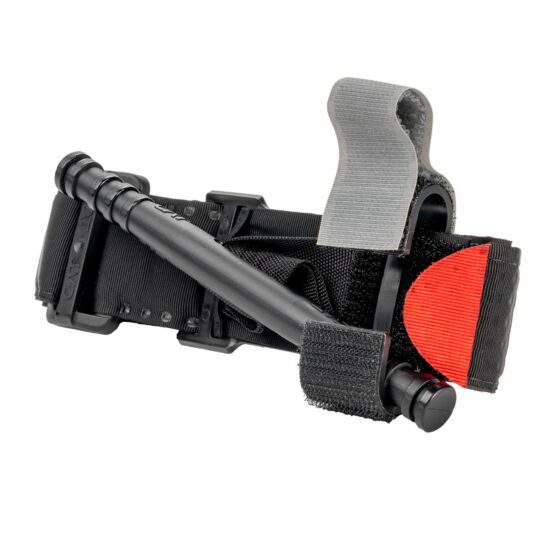С.А.В.С. algorithm
Content
- Components of the С.А.В.С. algorithm
- Critical bleeding
- Airways
- Breathing
- Circulation
- Tips for using the С.А.В.С. algorithm
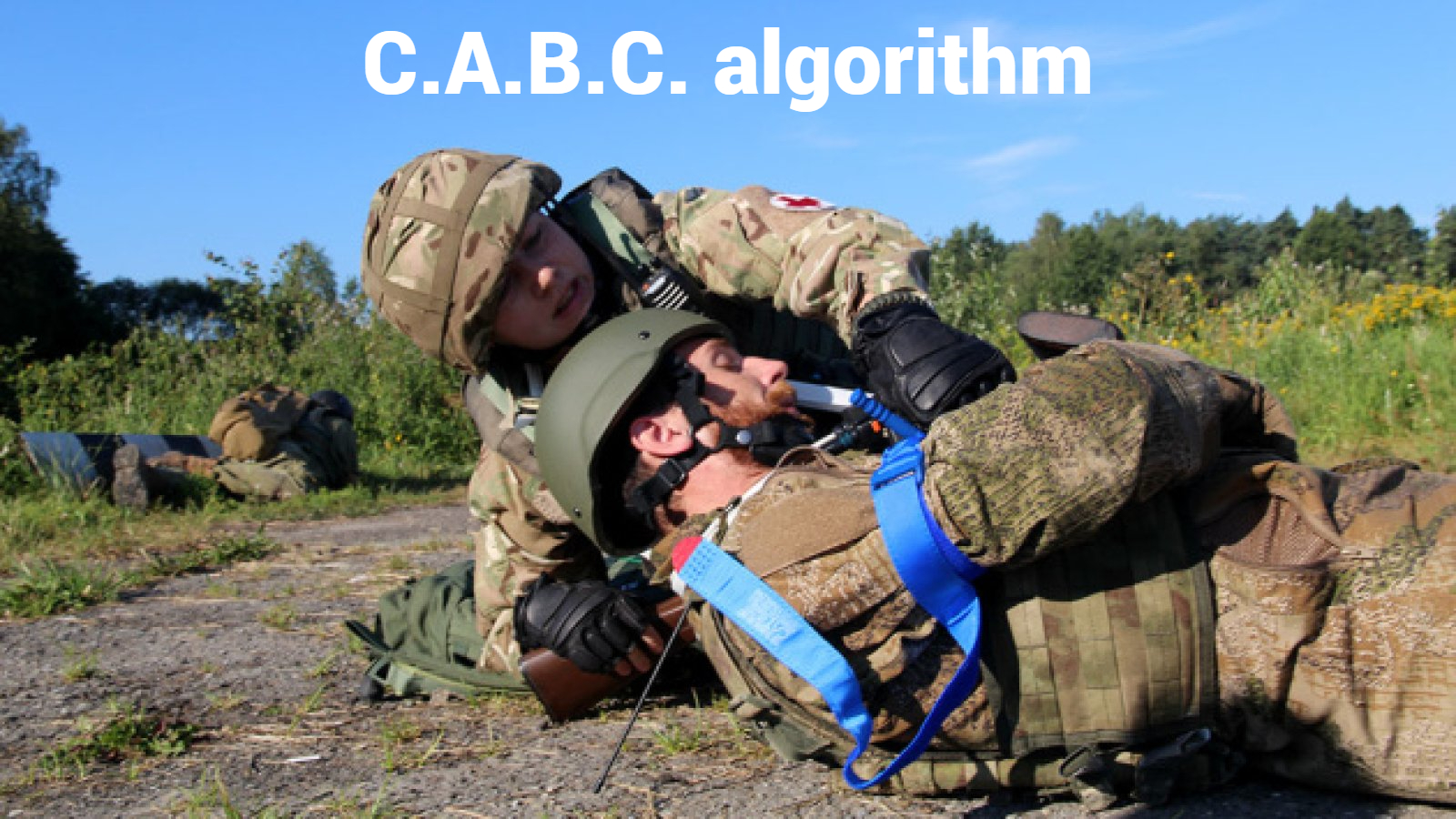
First aid on the battlefield is critical to saving the lives of the wounded. An analysis of the causes of soldier deaths shows that a significant number of them could have been saved. Approximately 90% of the wounded die before reaching a hospital, mostly due to non-life-threatening injuries.
However, some conditions, such as bleeding from the extremities, tension pneumothorax and respiratory problems, can be effectively treated even in combat.
Components of the С.А.В.С. algorithm
The Critical bleeding, Airways, Breathing, Circulation (С.А.В.С.) algorithm is an effective tool in medical practice for managing critical conditions on the battlefield and in extreme situations. The essence of this algorithm is a systematic approach to first aid, which not only saves lives but also increases the chances of successful recovery of the wounded.
The main goal of the С.А.В.С. algorithm is a structured and consistent management of injuries and other critical conditions, which includes several key stages. Each of these stages has its own specifics and importance in the process of providing care. The timely and correct implementation of each of the algorithm's components is the key to effective treatment and reducing the risk of death.
Critical bleeding
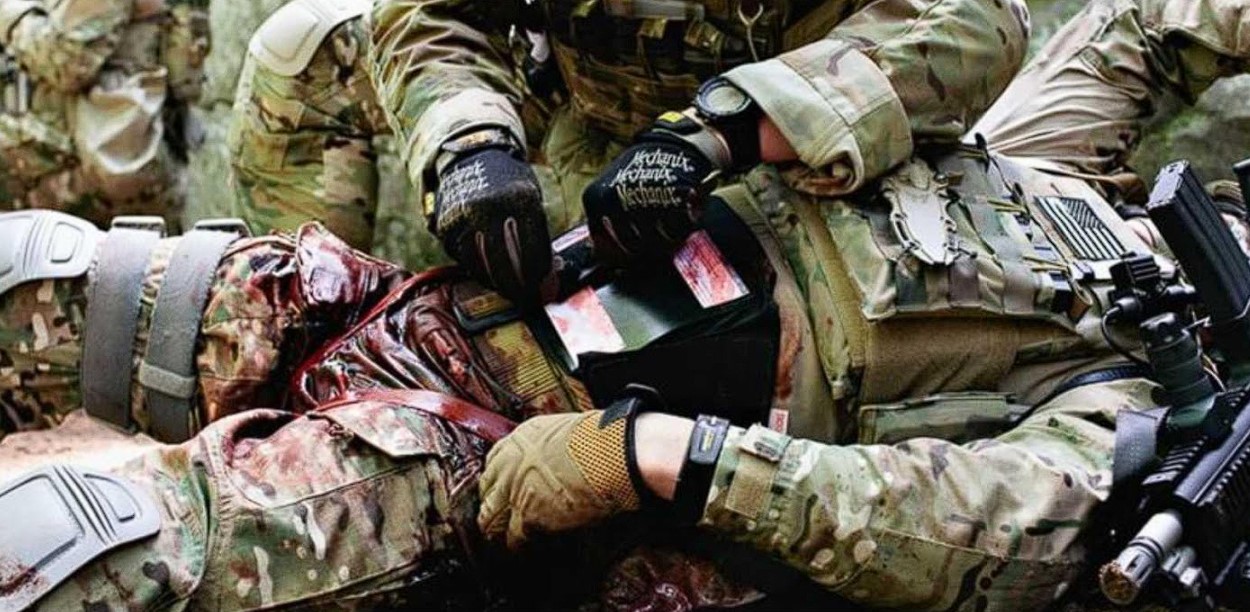
Critical bleeding is one of the main causes of death on the battlefield, accounting for 70% of all fatalities, according to NATO statistics. It differs from ordinary bleeding in that it is extremely dangerous due to rapid blood loss. For example, if the femoral artery is damaged, a wounded person can die in a few minutes: they will lose consciousness in 35–40 seconds and will not be able to help themselves.
How to recognise critical bleeding:
- Blood stains: A blood stain about 0.5 metres in diameter forms on the surface where the victim is located, which is constantly increasing.
- Wound in critical areas: The presence of a wound in a critical area of the body, such as the inner shoulder, thigh or neck.
- Blood-soaked clothing: Clothing in the critical body area is intensely soaked with blood.
- Blood pulsation: The sensation of blood pulsing in a blood-soaked area of the body.
If you detect critical bleeding, take immediate action to stop it. Here's what to do:
- Apply tourniquet: The most effective way to stop critical bleeding is to apply a tourniquet. Use a special tourniquet, such as a C.A.T. (Combat Application Tourniquet), or improvised tourniquets made from improvised materials such as cloth or a belt.
- Check for effectiveness: After applying the tourniquet, check to see if the bleeding has stopped. If the bleeding does not stop, check whether the tourniquet is properly applied and adjust its position if necessary.
Remember that critical bleeding is an emergency and assistance must be provided immediately. The examination of the victim shall not continue until the critical bleeding is stopped. In the event of critical bleeding, actions should be swift and focused on stopping blood loss to ensure the best chance of survival for the injured person.
Airways
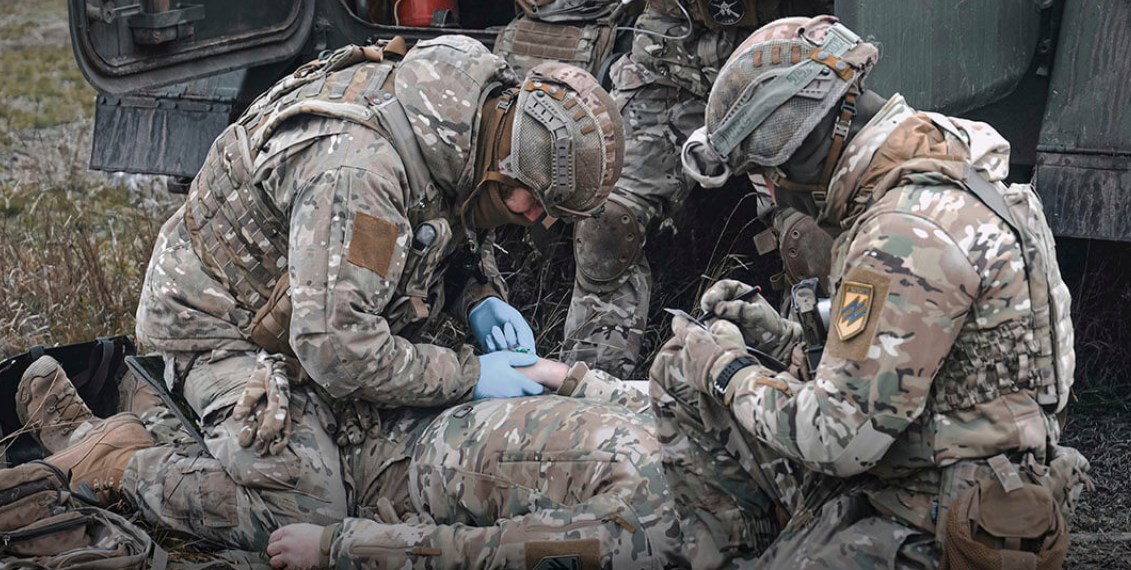
About 27% of combatants die due to airway obstruction. After checking for critical bleeding, attention should be paid to upper airway patency and assessment of respiratory rate and depth.
The airway should be free of obstructions, as even if the lungs are intact, a sunken tongue, jaw or tooth debris may block airflow. If the airway is blocked, oxygen will not reach the lungs, which can be fatal. It takes about 4 minutes to resolve an airway obstruction, and for chest injuries such as pneumothorax, the time can be up to 20 minutes.
How to recognise an airway obstruction:
- Shortness of breath: The victim answers questions in short sentences and has severe shortness of breath.
- Cyanosis: The skin is cyanotic, indicating a lack of oxygen.
- Anxiety: The victim appears restless or panicked.
- Abnormal breathing sounds: The presence of whistling, wheezing, noisy or gurgling breathing.
What to do in case of airway obstruction:
- Tilt the head: In most cases, the first step is to tilt the head. To do this, press down on the victim's forehead with one hand and use the other hand to pull the chin-up with two fingers. This allows you to open the airway and restore patency.
- The Safar method: If there is a suspicion of a head or cervical spine injury, the Safar method is used.
In this case:
- Place your hands behind the victim's lower jaw.
- Place your thumbs on the chin.
- Push the lower jaw slightly forward and simultaneously open the victim's mouth with your thumbs.
These methods will help restore airway patency and provide airflow to the lungs. It is important to act quickly and efficiently, as a delay can be life-threatening.
Breathing

A breathing test is used to determine whether the victim has an airway and is breathing. Breathing may be absent or insufficient, requiring urgent action to provide life support.
How to recognise breathing:
- Observation: Lean over the casualty's head, turning your face towards their chest. This will allow you to see chest movements, which indicates breathing.
- Listening: Listen for breathing sounds, such as wheezing or noisy inhalation/exhalation.
- Feeling: Feel the movement of air on your cheek as the victim inhales or exhales.
This test should be carried out for 5–10 seconds. To measure the time, you can count out loud to 30: ‘21, 22, 23, 24, 25, 26, 27, 28, 29, 30’. This will clearly correspond to 10 seconds, without the need to look for a phone or timer.
What to do in the absence of breathing:
- Ensure airway patency: If there is no breathing, first ensure airway patency (as described in the previous section). This may include tilting the head or using the Safar method if head or neck trauma is suspected.
- Start cardiopulmonary resuscitation (CPR): If breathing is not restored, cardiopulmonary resuscitation (CPR) should be started immediately. This involves alternating chest compressions and artificial respiration. CPR should be performed until medical help arrives or until the victim regains normal breathing.
The normal respiratory rate for an adult is 16-20 per minute (2-3 per 10 seconds). If the victim has no breathing or only one respiratory movement in 10 seconds, this indicates that there is no breathing. In this case, cardiopulmonary resuscitation should be initiated after calling for emergency medical assistance.
Circulation
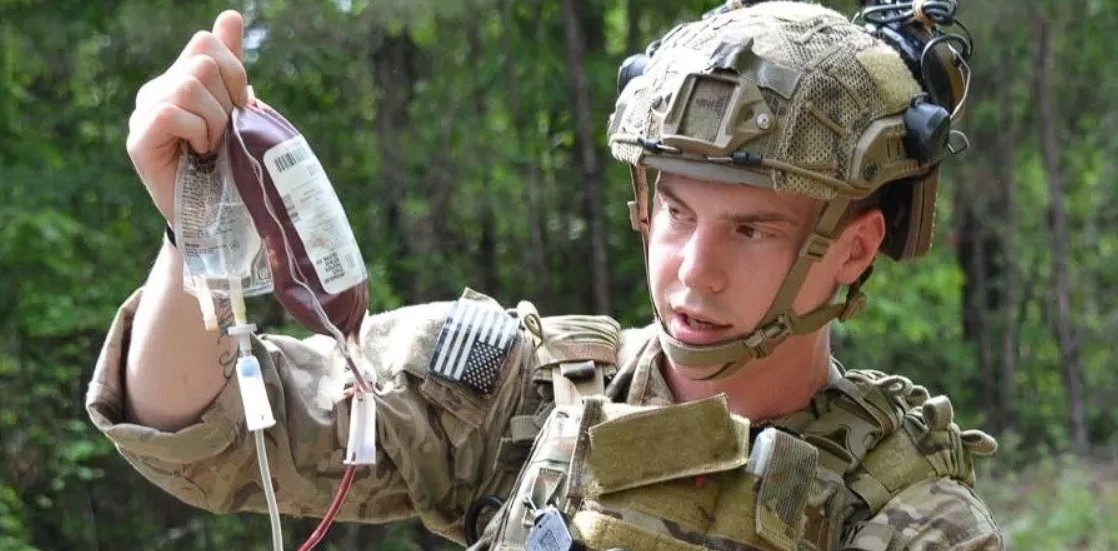
This step involves restoring the level of fluid (blood) in the victim's body and taking measures to stabilise their condition. Timely restoration of circulation can significantly increase the victim's chances of survival.
How to recognise circulatory problems:
- Fast pulse or lack of it: An absent or rapid pulse may indicate a serious circulatory problem.
- Pale or bluish skin: These signs may indicate poor circulation or shock.
- Low blood pressure: Low blood pressure can be a symptom of severe blood loss or serious circulatory problems.
- Reduced level of consciousness: The victim may be confused or lose consciousness due to poor circulation.
What to do in case of circulatory problems:
- Stop critical bleeding: First stop any critical bleeding using appropriate methods such as a tourniquet or tourniquet.
- Restore fluid volume: Immediately take steps to restore fluid volume to the casualty. This may include administering fluids by infusion, if possible. If you do not have access to medical supplies, try to keep the casualty in a horizontal position and cover them to prevent hypothermia.
- Stabilise body temperature: It is important to avoid hypothermia, which can worsen the victim's condition. Keep the victim warm by covering them with clothing or a blanket. This will help maintain normal body temperature and improve the overall condition of the victim.
- Monitor the condition: Constantly monitor the victim's pulse, blood pressure and level of consciousness. If the condition deteriorates or new symptoms appear, use any available medical means until professional medical help arrives.
Assessment and restoration of circulation is essential for life support, so actions must be quick and effective. Remain calm and act according to the circumstances to maximise the chances of saving the victim.
Tips for using the С.А.В.С. algorithm
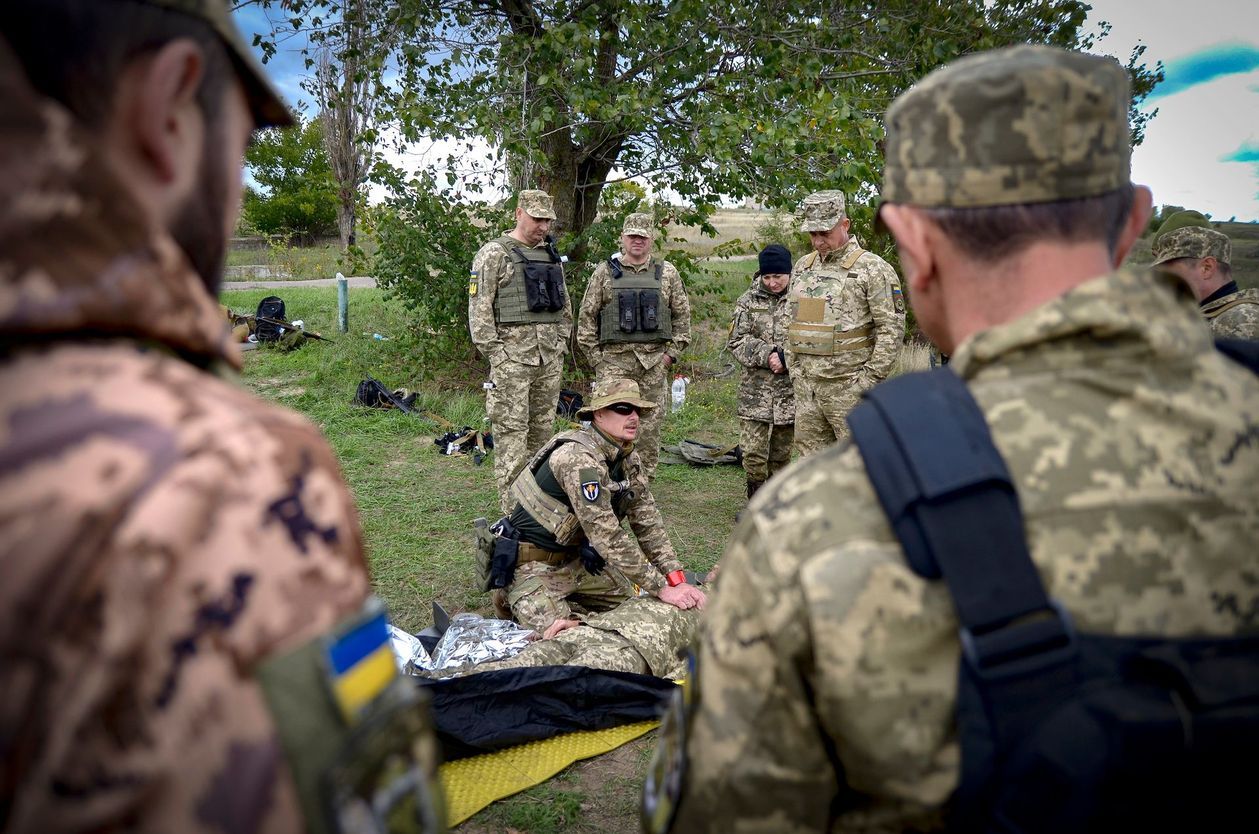
The С.А.В.С. algorithm is a very important tool for providing emergency medical care in life-threatening situations such as combat or accidents. The correct application of this algorithm can significantly increase the chances of survival of the victim. Here are some important tips on how to use the algorithm and the need for training.
Familiarising yourself with the С.А.В.С. algorithm is the first step to ensuring quality medical care. Understanding each step, from checking for critical bleeding to assessing breathing, helps you react quickly and act in a critical situation. Therefore, it is important not only to learn the algorithm, but also to practice it on a regular basis.
Taking specialised courses or training in first aid is another key aspect. Courses provide not only theoretical knowledge, but also the practical skills needed to quickly and accurately assess the victim's condition. Regularly updating knowledge and skills allows you to maintain a high level of emergency preparedness.
Real-life skills can only be honed through regular practice. Performing simulation exercises helps to increase the speed and accuracy of actions, as well as self-confidence. This is especially important in stressful situations where every second counts.
When applying the С.А.В.С. algorithm, you should react in a timely and decisive manner. You should never stay at one stage or try to solve all problems at once. Each step of the algorithm, starting with checking for critical bleeding, should be performed quickly and decisively.
After the initial assessment and care, it is important to constantly monitor the victim's condition and adapt your actions depending on changes in their condition. If necessary, re-assess bleeding, breathing and other critical vital signs.
Documentation of all actions taken and the victim's condition is important for further medical care. It helps medical professionals get a complete picture of the situation and make the right decisions.
Effective use of the С.А.В.С. algorithm can save lives in critical situations. That is why it is important not only to know the theoretical foundations, but also to practice the skills regularly, be ready to respond quickly and maintain practical experience. Courses, simulations, and regular training are the basis for successful application of the algorithm and provision of quality medical care.
